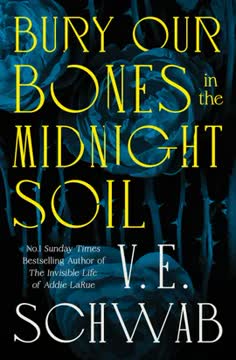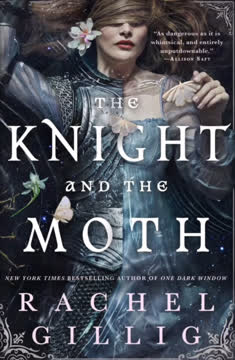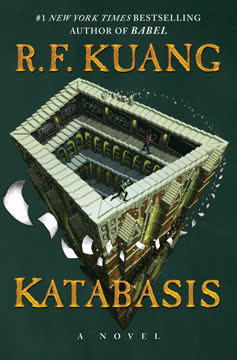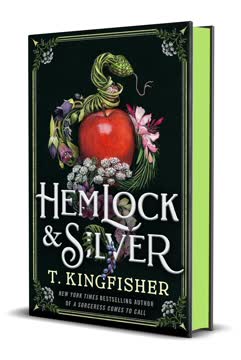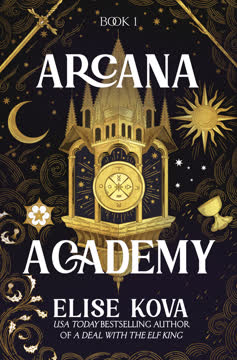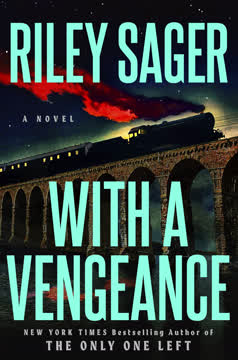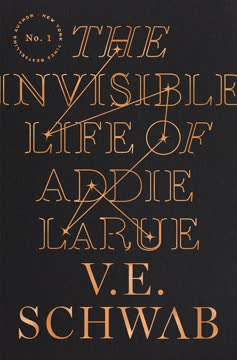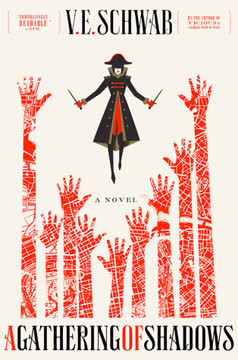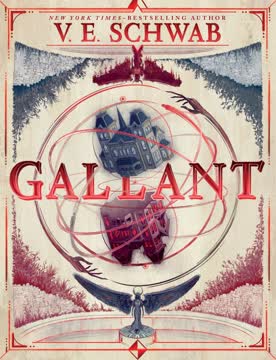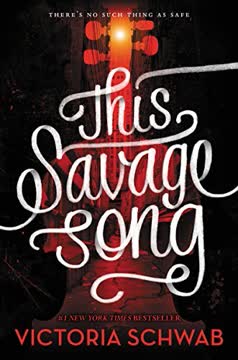Plot Summary
Feral Rose, Sharp Teeth
The story opens with a poem: "Bury my bones in the midnight soil, plant them shallow and water them deep, and in my place will grow a feral rose, soft red petals hiding sharp white teeth." This image sets the tone for a novel about hunger, transformation, and the violence that can hide beneath beauty. The narrative is split between centuries and continents, following women who are made and unmade by love, longing, and the monstrous power of immortality. The rose, both beautiful and dangerous, becomes a central symbol for the women at the heart of the story—those who are forced to survive in a world that would rather see them tamed or buried.
Hunger in the Blood
From the start, hunger is more than a metaphor: it is the engine of the story. The characters hunger for love, for freedom, for a life of their own making. But hunger is also literal—blood, power, and the need to consume or be consumed. The narrative follows María, a restless girl in 16th-century Spain, whose wildness and red hair mark her as an outsider. Her journey is mirrored centuries later by Alice, a Scottish girl at Harvard, who is also marked by her difference and longing. Both are drawn into the orbit of women who promise escape, but at a terrible cost.
The Widow Arrives
In María's world, the arrival of a mysterious widow in gray upends the rhythms of her small Spanish town. The widow is a healer, a gatherer of herbs, and a woman who knows how to survive alone. She is also a figure of rumor and fear—witch, saint, or something else. María is drawn to her, sensing both danger and possibility. The widow's presence is a catalyst, setting María on a path that will lead her away from home, into marriage, and eventually into the arms of death and rebirth.
A Life in Shadows
María's marriage to the Viscount Andrés is a gilded cage. She is traded as property, her body a vessel for heirs, her hunger and wildness suppressed. The only solace is her growing friendship with Ysabel, her maid and the count's illegitimate daughter. But even this is not enough. When María is forced to move to her in-laws' house in León, she is suffocated by boredom and control. The only escape is the apothecary run by the widow, Sabine, who teaches her the secrets of herbs, reading, and the power of claiming one's own story.
The Making of Monsters
Sabine is not what she seems. She is a vampire—though the word is rarely used—and she offers María a way out: freedom, power, and immortality, at the cost of her humanity. The transformation is violent and hungry. María, now Sabine, kills her husband and his family, burns her old life, and flees into the night. She is reborn as a monster, but also as something new: a woman who cannot be tamed, who will never again be owned.
Lessons in Want
Sabine's new life is a long, bloody education. She learns to hunt, to seduce, to survive. She meets others of her kind—some who teach her restraint, others who teach her the dangers of losing one's self to hunger. She forms a found family with Hector and Renata, two ancient vampires who show her the rules of their world: how to claim space, how to play the long game, how to avoid the rot that comes with immortality. But even among monsters, love and jealousy can be fatal.
The Price of Freedom
Sabine's story is mirrored by Charlotte (Lottie), a young woman in 19th-century England, sent to London to be polished for marriage. She is restless, hungry for more than the life prescribed to her. She meets Sabine at a ball, and the two are drawn together by longing and recognition. Sabine offers Charlotte the same bargain she once accepted: freedom, power, and immortality, at the cost of her old life. Charlotte says yes, and is remade. But Sabine extracts a promise: never to hurt her. This promise will become a curse.
Love, Rot, and Ruin
For decades, Sabine and Charlotte are lovers, partners, and monsters together. But time is not kind to the immortal. Sabine begins to rot inside—her empathy, her care, her restraint all withering, leaving only hunger and violence. Charlotte tries to hold on, to save her, but the promise she made binds her: she cannot hurt Sabine, even as Sabine becomes a stranger, a threat. The love that once set her free becomes a prison.
The Promise That Binds
Charlotte's promise not to hurt Sabine is magically binding. When Sabine's rot turns her into a killer, Charlotte tries to stop her, but her body will not obey. She cannot drive a stake into Sabine's heart, cannot fight back, cannot even run far enough to be free. Sabine hunts her across continents and decades, killing anyone Charlotte loves. The only way to break the chain is to run, to be alone, to let her heart harden.
The Rotting Heart
The story explores the idea that immortality is not a gift, but a slow death. The heart is the only mortal part of the vampire; when it is destroyed, so are they. But long before that, the soul rots away. Sabine is not the only one to succumb—others, like Giovanni, lose themselves to hunger and violence. The only way to survive is to let go of love, to be alone, to avoid the rot. But loneliness is its own kind of death.
The Cost of Immortality
Charlotte tries to build a new life in America, but Sabine's shadow follows her. Every time she lets herself love, Sabine finds her, kills her lovers, and leaves her alone again. The only way to keep others safe is to keep her distance, to let herself be alone. She becomes a ghost, haunting her own life, until she meets Alice—a girl who is hungry, lonely, and full of longing, just as she once was.
The Haunting of Charlotte
Charlotte's guilt over the lives she's taken, the women she's failed to save, and the monster she's become is a constant ache. She keeps a list of names, a record of those she's touched and left alive, a way to prove to herself that she is not Sabine. But when Sabine kills Alice, turning her into a vampire, Charlotte is forced to confront the truth: she cannot outrun her past, or her promise.
The New Girl's Hunger
Alice Moore, a Scottish girl at Harvard, is killed and remade by Sabine as a way to punish Charlotte. She wakes up hungry, lost, and alone, with no memory of what happened. She searches for answers, for Lottie, for a way to undo what's been done. She learns the rules of her new life: the hunger, the power, the danger of grave dirt and sunlight, the importance of claiming space. She is told that if she kills her maker, she can be human again.
The Rope Between Sisters
Alice's story is haunted by the loss of her sister, Catty, who ran away and died young. The rope between them—a metaphor for the bonds of love and grief—runs through Alice's life, shaping her hunger, her longing, her inability to let go. The story explores how grief can be both a weight and a guide, how the dead shape the lives of the living, and how the past is never truly gone.
The Game of Survival
The climax of the novel is a deadly game: Sabine, Lottie, and Alice are all hunting and being hunted. Sabine wants to kill Lottie and Alice, to end the game on her terms. Lottie wants Alice to kill Sabine, believing it will set her free. Alice wants to survive, to find a way back to life, or at least to a life worth living. The game is played in clubs, penthouses, and city streets, with compulsion, poison, and violence.
The End of Sabine
Alice, with Lottie's help, lures Sabine into a trap. She poisons her with grave dirt, then kills her with a shard of slate, driving it through her heart. Sabine crumbles to ash, her tokens left behind. But the promised return to life does not come. Alice is still dead, still hungry, still alone. The only thing that has changed is that the monster is gone.
The End of Lottie
Lottie, wracked by guilt and grief, tries to comfort Alice, to promise her a new life together. But Alice, realizing that Lottie is as much a monster as Sabine, poisons her with grave dirt and kills her with a silver brush. Lottie dies, leaving behind a pile of wet earth and a battered book, her list of names. The cycle of violence is broken, but at a terrible cost.
Alive, Alone, and Hungry
Alice steps out into the night, alone. She calls her father, listens to his voice, and realizes that life goes on, even when the dead are left behind. She is not alive, not as she was, but she is not dead, either. She is something new: a feral rose, soft red petals hiding sharp white teeth. The hunger is still there, but so is the possibility of a new story. She walks into the night, alive, alone, and hungry.
Characters
María / Sabine
María is a wild, red-haired girl in 16th-century Spain, marked as different by her family and community. Her hunger for more—love, freedom, escape—leads her into the orbit of a mysterious widow, Sabine, who is both healer and vampire. After a brutal marriage and a series of betrayals, María is transformed by Sabine, becoming a vampire herself. She kills her husband and his family, burns her old life, and takes the name Sabine. Over centuries, Sabine becomes both mentor and monster, teaching others how to survive, but also succumbing to the rot of immortality. Her love is possessive, her hunger insatiable, and her violence both seductive and terrifying. She is both victim and villain, a woman who cannot be tamed, but who is ultimately destroyed by the very promises and desires that set her free.
Charlotte / Lottie
Charlotte Hastings is a young woman in 19th-century England, sent to London to be polished for marriage. She is restless, passionate, and full of longing for a life of her own making. She falls in love with Sabine, who offers her immortality and freedom, but at the cost of her old life and a binding promise never to hurt her maker. Charlotte is remade as a vampire, but her heart remains fragile, her guilt and grief ever-present. She tries to hold on to her humanity, to save others from Sabine, but is ultimately forced to become a monster herself. Her love for Sabine is both her salvation and her undoing, and her attempts to break free lead to a cycle of violence and loss.
Alice
Alice Moore is a Scottish girl at Harvard, marked by her difference and her grief for her lost sister, Catty. She is killed and remade by Sabine as a way to punish Charlotte, waking up hungry, lost, and alone. Alice's journey is one of survival: learning the rules of her new life, searching for answers, and trying to find a way back to herself. She is haunted by the rope between her and Catty, by the hunger that never ends, and by the violence that has been done to her. In the end, Alice is forced to kill both Sabine and Lottie, breaking the cycle of violence but losing her chance at a normal life. She walks into the night, alive, alone, and hungry, but determined to write her own story.
Ysabel
Ysabel is María's maid and the illegitimate daughter of the count. She is gentle, kind, and a source of comfort in María's otherwise suffocating life. Their friendship is tinged with longing and the possibility of more, but is ultimately cut short by the violence and control of the men around them. Ysabel's fate is a reminder of the limited choices available to women, and the ways in which love and loyalty can be used against them.
Andrés
Andrés is the Viscount who marries María, seeing her as property and vessel for heirs. He is violent, controlling, and ultimately destroyed by the very woman he sought to own. His death at María's hands is both an act of revenge and a moment of liberation, but also the beginning of her transformation into something monstrous.
Hector
Hector is an old vampire who becomes Sabine's mentor and companion. He teaches her the rules of their world, the importance of restraint, and the dangers of rot. He is both wise and flawed, a poet who sees the beauty and brutality of immortality. His relationship with Renata and Sabine is both familial and fraught, and his eventual death is a reminder that even monsters are mortal.
Renata
Renata is Hector's lover and Sabine's companion, a vampire who is both playful and cruel. She teaches Sabine the pleasures of the hunt, the importance of savoring life, and the dangers of love. Her death, burned in a coffin, is a turning point for Sabine, marking the end of her found family and the beginning of her rot.
Giada
Giada is an Italian model and artist's muse who becomes Charlotte's lover in Rome. She is vibrant, passionate, and full of life, a reminder of what Charlotte has lost and what she still longs for. Giada's death at Sabine's hands is a devastating blow, shattering Charlotte's hope for happiness and forcing her to confront the cost of immortality.
Penny
Penny is a New York bookseller who becomes Charlotte's lover. She is turned into a vampire by Sabine as a way to punish Charlotte, forcing her to kill the woman she loves rather than let her become a monster. Penny's death is a turning point, marking the end of Charlotte's hope for love and the beginning of her resolve to end the cycle of violence.
Ezra
Ezra is an old vampire who runs a coffee shop in Boston, serving as a mentor and confidant to Charlotte and Alice. He is wise, patient, and pragmatic, teaching them the rules of survival and the importance of letting go. Ezra is a reminder that not all monsters are evil, and that even the undead can find purpose and meaning in a life of their own making.
Plot Devices
Dual Timelines and Mirrored Lives
The novel is structured around dual timelines: María/Sabine's story in the past, and Alice's story in the present. These timelines mirror each other, with characters repeating patterns of hunger, longing, violence, and love. The structure allows the reader to see how the choices of one generation shape the lives of the next, and how the cycle of violence and desire can be both broken and perpetuated.
The Power of Promises
Promises are binding in this world, both emotionally and magically. When Charlotte promises never to hurt Sabine, she is literally unable to break the vow, even when Sabine becomes a monster. This device explores the ways in which love can become a prison, and how the things we say to protect ourselves can become the very things that destroy us.
The Rot of Immortality
Immortality is not a blessing, but a slow death. The only way to kill a vampire is to destroy the heart, but long before that, the soul rots away. The novel uses this device to explore the cost of living forever: the loss of empathy, care, and restraint, the dangers of loneliness, and the ways in which monsters are made, not born.
The Rope Between Sisters
Alice's relationship with her sister, Catty, is a central plot device, a metaphorical rope that ties her to the past and shapes her hunger, longing, and inability to let go. The story uses this device to explore the ways in which grief can be both a weight and a guide, and how the dead shape the lives of the living.
The Game of Survival
The climax of the novel is structured as a deadly game, with Sabine, Lottie, and Alice all hunting and being hunted. The game is played with compulsion, poison, and violence, and the only way to win is to break the cycle of violence by killing the monster at its heart.
Foreshadowing and Repetition
The novel is full of foreshadowing: the poem at the start, the repeated images of roses, teeth, and hunger, the warnings about promises and rot. Events in the past echo in the present, and the choices of one character ripple through the lives of others. The structure is recursive, with each generation forced to confront the same questions: What are you willing to do to be free? What is the cost of love? How do you survive in a world that wants to bury you?
Analysis
Bury Our Bones in the Midnight Soil is a lush, haunting meditation on what it means to be hungry—for love, for freedom, for a life of one's own making—and the violence that can hide beneath beauty. Schwab uses the vampire myth to explore the ways in which women are forced to survive in a world that would rather see them tamed or buried, and the cost of claiming power in a world that punishes desire. The novel is both a love story and a horror story, a tale of found family and monstrous inheritance, a warning about the dangers of promises and the rot of immortality. It is also a story about grief, and the ways in which the dead shape the lives of the living. In the end, the novel refuses easy answers: there is no going back, no undoing what has been done. But there is always the possibility of a new story, a new life, a new hunger. The lesson is both brutal and hopeful: survival is not the same as freedom, and the only way to break the cycle of violence is to write your own ending.
Last updated:
FAQ
Synopsis & Basic Details
What is Bury Our Bones in the Midnight Soil about?
- A Gothic Tale of Immortality: The novel weaves together the stories of women across centuries who are transformed into vampires, exploring the dark allure and devastating cost of eternal life. It follows María in 16th-century Spain and Alice in 21st-century Boston, both drawn into a world of hidden hunger and monstrous power.
- Love, Loss, and Transformation: At its heart, the story is a meditation on desire, control, and the ways love can become both a salvation and a cage. Characters grapple with the erosion of humanity over time and the struggle to hold onto self in the face of unending hunger and violence.
- Breaking Cycles of Violence: Through mirrored narratives and interconnected fates, the book examines themes of inheritance, trauma, and the possibility (or impossibility) of escaping destructive patterns set by those who came before.
Why should I read Bury Our Bones in the Midnight Soil?
- Lush, Evocative Prose: V.E. Schwab's signature writing style creates a rich, atmospheric reading experience, immersing you in historical settings and the psychological depths of her characters. The language itself mirrors the themes of hidden beauty and underlying darkness.
- Complex, Morally Ambiguous Characters: The novel delves into the motivations and inner lives of its protagonists, presenting them not as simple heroes or villains, but as complex beings shaped by circumstance, hunger, and the passage of centuries.
- Unique Take on Vampire Lore: Moving beyond traditional tropes, the book explores immortality as a form of slow decay, where the soul rots before the body, and examines the binding power of promises and the physical manifestation of emotional states.
What is the background of Bury Our Bones in the Midnight Soil?
- Historical Settings as Characters: The story is deeply rooted in its historical periods, from 16th-century Spain on the Camino de Santiago to 19th-century London society and 20th-century Rome and Boston. These settings are not just backdrops but influence the characters' opportunities, constraints, and the very nature of their existence.
- Cultural Context of Female Agency: The constraints placed upon women in different eras, particularly in 16th-century Spain and 19th-century England, highlight the limited choices available and make the monstrous freedom offered by vampirism a potent, albeit dark, escape. María's marriage and Charlotte's presentation in society are direct results of these historical limitations.
- Literary and Mythological Echoes: The novel draws on gothic traditions, fairy tale structures (like the poem about the feral rose), and mythological parallels (Orpheus and Eurydice) to enrich its themes of transformation, haunting, and the inescapable pull of the past.
What are the most memorable quotes in Bury Our Bones in the Midnight Soil?
- "Bury my bones in the midnight soil, plant them shallow and water them deep, and in my place will grow a feral rose, soft red petals hiding sharp white teeth.": This opening poem serves as an epigraph and a central metaphor, encapsulating the novel's core themes of death, rebirth, hidden danger, and the violent beauty of the protagonists.
- "Knowledge is power, María. Never turn it down.": Spoken by Sabine to María, this line underscores the value placed on learning and understanding in a world where ignorance is often a form of powerlessness, particularly for women, and foreshadows María's own pursuit of knowledge as a tool for survival.
- "Of all the ways to die... fire is the worst.": This chilling warning, repeated throughout the novel, highlights the unique vulnerabilities of these vampires and serves as a grim foreshadowing of the fates that await some characters, emphasizing the brutal reality beneath the allure of immortality.
What writing style, narrative choices, and literary techniques does V.E. Schwab use?
- Dual Timelines and Mirrored Lives: The narrative jumps between centuries and characters (María/Sabine, Charlotte/Lottie, Alice), often mirroring events or themes across different eras, creating a sense of historical depth and interconnected fate.
- Sensory and Visceral Language: Schwab employs rich, often unsettling sensory details, particularly around hunger, blood, and physical sensations (cold skin, aching teeth, phantom heartbeats), immersing the reader in the characters' unique physical reality.
- Symbolism and Motif: Recurring symbols like roses, teeth, mirrors, and specific colors (red, gray, gold, blue) are woven throughout the text, adding layers of meaning and connecting disparate elements of the story.
Hidden Details & Subtle Connections
What are some minor details that add significant meaning?
- Cherry Pits as Seeds of Rebellion: From María sucking on cherry pits in Santo Domingo to spitting them out and burying them, and later planning a cherry orchard, this recurring image symbolizes her inherent restlessness, her desire for something more, and her subtle acts of defiance against control.
- The Scent of Characters: The distinct smells associated with characters (María's candied figs and winter spice, Alice's wet earth and wrought iron, Giada's lemon and sugar) are not just sensory details but act as identifiers and emotional markers, often perceived by other vampires and hinting at their nature or state.
- The Significance of Hands and Touch: Repeated descriptions of hands—María's pricked fingers, Andrés's pawing grip, Sabine's cool touch, Charlotte's drawing hands, Alice's cold fingers—emphasize themes of control, connection, creation, and the physical intimacy (both desired and unwanted) that defines relationships in the story.
What are some subtle foreshadowing and callbacks?
- The Widow's Veil and Sabine's Nature: The widow's gray mourning dress and veil in María's first encounter subtly foreshadow Sabine's true nature as a creature of the dark, sensitive to sunlight, and hints at the perpetual state of 'mourning' or separation from the living world that vampires inhabit.
- The "Midnight Soil" Poem's Literal Roots: The opening poem isn't just metaphorical; the concept of being "planted" in the earth and growing as a "feral rose" is later revealed to be a literal vulnerability for vampires, particularly the danger posed by grave dirt, adding a chilling layer to the initial poetic image.
- Repeated Phrases and Gestures: Phrases like "Men like that, they take what they want," or descriptions of characters being "pulled" or "drawn" towards others, echo across timelines, highlighting the cyclical nature of power dynamics and desire, and suggesting that history repeats itself in subtle ways.
What are some unexpected character connections?
- Ysabel as a Precursor to Charlotte: María's maid, Ysabel, the count's illegitimate daughter, shares subtle physical traits (tawny hair, face shape) and a quiet longing with Charlotte. María's brief, almost-romantic connection with Ysabel foreshadows her later, deeper relationship with Charlotte, hinting at a pattern of seeking intimacy with women who are also outsiders or hidden figures.
- Matteo's Lover Alessandro and Charlotte's Friend Jocelyn: The descriptions of Alessandro, Matteo's human lover, and Jocelyn, Charlotte's first love, share striking similarities (blond/dark hair contrast, specific eye colors, artistic inclinations), suggesting that vampires are drawn to certain 'types' of human beauty and personality, and highlighting the recurring tragedy of loving mortals.
- Ezra's Connection to Antonia and Jack: Ezra's casual mention of Antonia and Jack, and his ability to contact them, reveals a wider network of these creatures beyond the immediate narrative, suggesting a hidden society and providing a crucial link for Alice when she needs help, showing that even solitary vampires maintain connections.
Who are the most significant supporting characters?
- Catty, Alice's Sister: Though only appearing in flashbacks and memories, Catty is arguably the most significant supporting character for Alice. Her rebellious spirit, her struggles with grief, and her tragic death shape Alice's core motivations, her understanding of loss, and her initial desire for escape and transformation.
- Matteo, the Venetian Host: Matteo serves as a crucial mentor figure for Sabine, teaching her the rules of their world, the importance of restraint, and the dangers of rot. His relationship with Alessandro provides a counterpoint to Sabine's own destructive tendencies and offers a glimpse of a different way to exist as a vampire.
- Ezra, the Boston Coffee Shop Owner: Ezra acts as a guide and voice of reason for both Charlotte and Alice in the later parts of the story. His pragmatic approach to immortality and his willingness to help, despite his preference for solitude, offer a sense of hope and stability in a chaotic world, embodying a different path for those "grown in the midnight soil."
Psychological, Emotional, & Relational Analysis
What are some unspoken motivations of the characters?
- María's Hunger for Agency: Beyond escaping her small town and arranged marriage, María's deepest unspoken motivation is a fierce desire for control over her own life and body, a reaction against the patriarchal constraints placed upon her, which fuels her willingness to embrace monstrous power.
- Sabine's Fear of Loneliness: Despite her outward confidence and preference for solitude, Sabine's actions, particularly her creation of Charlotte and her later pursuit of her, are subtly driven by a deep-seated fear of true, unending loneliness, a consequence of her centuries of existence.
- Charlotte's Need for Connection: Charlotte's relentless pursuit of love and connection, even after repeated heartbreak and loss, stems from a fundamental need to be seen and known, a vulnerability that Sabine exploits and that ultimately drives Charlotte's most desperate choices.
What psychological complexities do the characters exhibit?
- The Paradox of Immortal Decay: The vampires exhibit a complex psychological state where the loss of human emotions like empathy and fear is a form of internal decay, yet this very decay can manifest as heightened, often perverse, desires and a chilling detachment from violence.
- Trauma and Repetition Compulsion: Characters like Charlotte and Alice exhibit patterns of behavior that suggest trauma response, repeating cycles of seeking intense connection and experiencing sudden, violent loss, as if compelled by their pasts.
- Identity and Performance: The characters constantly perform versions of themselves – María as a dutiful daughter, Sabine as a grieving widow or charming socialite, Charlotte as a proper debutante, Alice as a normal student – highlighting the psychological toll of living a hidden life and the fluidity of identity when unbound by time.
What are the major emotional turning points?
- María's Wedding Night: The brutal, non-consensual nature of María's first sexual encounter with Andrés is a pivotal emotional turning point, solidifying her resentment and fueling her desire for escape and retribution, marking the moment her gilded cage becomes unbearable.
- Charlotte's Kiss with Jocelyn: The brief, interrupted kiss in the garden with her best friend Jocelyn is a major emotional catalyst for Charlotte, revealing her true desires and leading directly to her being sent away, setting in motion the events that lead her to Sabine.
- Alice's Realization of Her Death's Meaninglessness: The moment Alice understands that her transformation wasn't a planned act of malice towards her, but a random consequence of Sabine's game with Lottie, is a devastating emotional turning point, stripping her death of any perceived meaning and fueling her rage.
How do relationship dynamics evolve?
- From Ownership to Consumption (María & Andrés): Their relationship devolves from an arranged marriage where María is treated as property to a violent act of consumption where María literally takes Andrés's life, reversing the power dynamic entirely.
- From Seduction to Possession (Sabine & Charlotte): What begins as a seductive courtship based on shared longing and perceived freedom gradually transforms into a possessive, abusive dynamic where Sabine's love becomes a form of control and Charlotte is bound by a promise that prevents her from escaping the relationship's decay.
- From Connection to Betrayal (Charlotte & Giada/Penny): Charlotte's relationships with her human lovers, Giada and Penny, represent her attempts to recapture lost human connection, but these relationships are tragically cut short by Sabine's interference, turning love into a source of pain and highlighting the impossibility of a normal life.
Interpretation & Debate
Which parts of the story remain ambiguous or open-ended?
- The Exact Nature of the "Rot": While described as the loss of human emotions and capacity for love/fear, the precise mechanism or trigger for the "rot" remains somewhat ambiguous. Is it simply the passage of time, specific actions (like excessive killing), or a lack of meaningful connection that causes it?
- The Power of Promises: The magical force behind promises among these vampires is presented as absolute, but the source or limits of this power are not fully explained. Could certain promises be broken, or are they truly inescapable once made?
- The Future of Alice: The ending leaves Alice alive, alone, and hungry, but with the possibility of a new story. Her path forward is entirely open-ended – will she succumb to the rot, find a different way to exist, or continue the cycle of violence?
What are some debatable, controversial scenes or moments in Bury Our Bones in the Midnight Soil?
- María's Transformation and Revenge: The scene where María, newly turned, kills Andrés and his family is brutal and violent. While framed as liberation, the extent of the bloodshed and her immediate embrace of monstrousness could be debated as a justified act of revenge or a chilling descent into evil.
- Sabine's Treatment of Charlotte: Sabine's increasingly cruel and possessive behavior towards Charlotte, culminating in her deliberate killing of Charlotte's lovers to punish her, is deeply disturbing. Readers might debate whether Sabine was always inherently monstrous or if the rot truly transformed her, and the extent to which Charlotte is a victim or complicit in staying.
- Alice's Final Actions: Alice's decision to kill both Sabine and Lottie, particularly the brutal manner of Lottie's death, is highly controversial. While driven by rage and a desire for justice/freedom, her actions mirror the violence done to her, raising questions about whether she has broken the cycle or simply become the next monster.
Bury Our Bones in the Midnight Soil Ending Explained: How It Ends & What It Means
- The Cycle Broken, But Not Undone: The ending sees Alice kill both Sabine and Lottie, effectively ending the direct line of monstrous creation and the cycle of abuse between them. However, Alice remains a vampire, still subject to the hunger and the potential for rot, meaning the cycle of being a monster is not broken, only the specific chain of makers.
- No Return to Humanity: Lottie's promise that killing Sabine would make Alice human again proves false. This subverts a common trope and emphasizes the irreversible nature of the transformation, highlighting the novel's theme that some changes cannot be undone and there is no going back to the past.
- A New Beginning, Alone: Alice is left alive, alone, and still hungry, but with a newfound understanding of her nature and the world she inhabits. The ending is not traditionally happy, but it is hopeful, suggesting that survival and the possibility of forging one's own path, even as a monster, is a form of freedom.
Review Summary
Bury Our Bones in the Midnight Soil receives high praise for its lyrical prose, complex characters, and intricate storylines spanning centuries. Readers laud Schwab's exploration of vampirism, sapphic relationships, and feminist themes. Many compare it favorably to her previous works, particularly "Addie LaRue" and "Vicious." The novel's atmospheric writing and emotional depth are frequently highlighted. While some found the pacing slow at times, most readers were captivated by the toxic, haunting narrative. The ending garnered mixed reactions, but overall, the book is highly anticipated and well-received.
Similar Books
Download PDF
Download EPUB
.epub digital book format is ideal for reading ebooks on phones, tablets, and e-readers.
